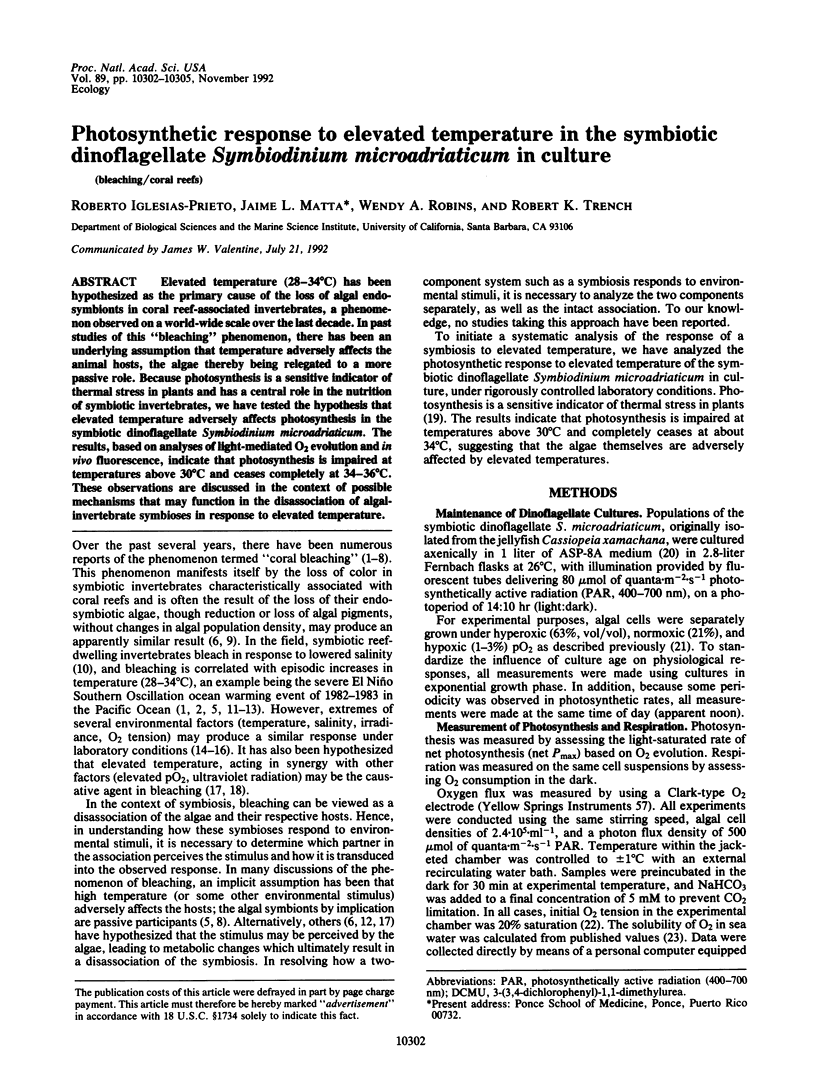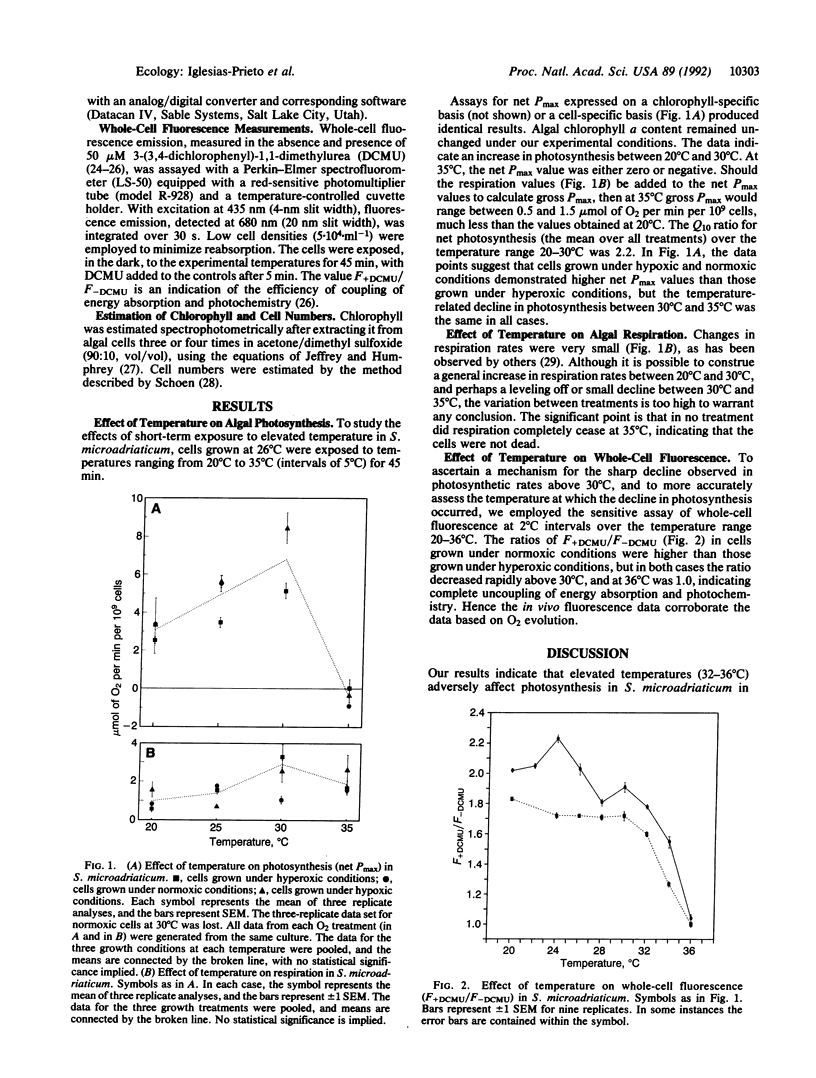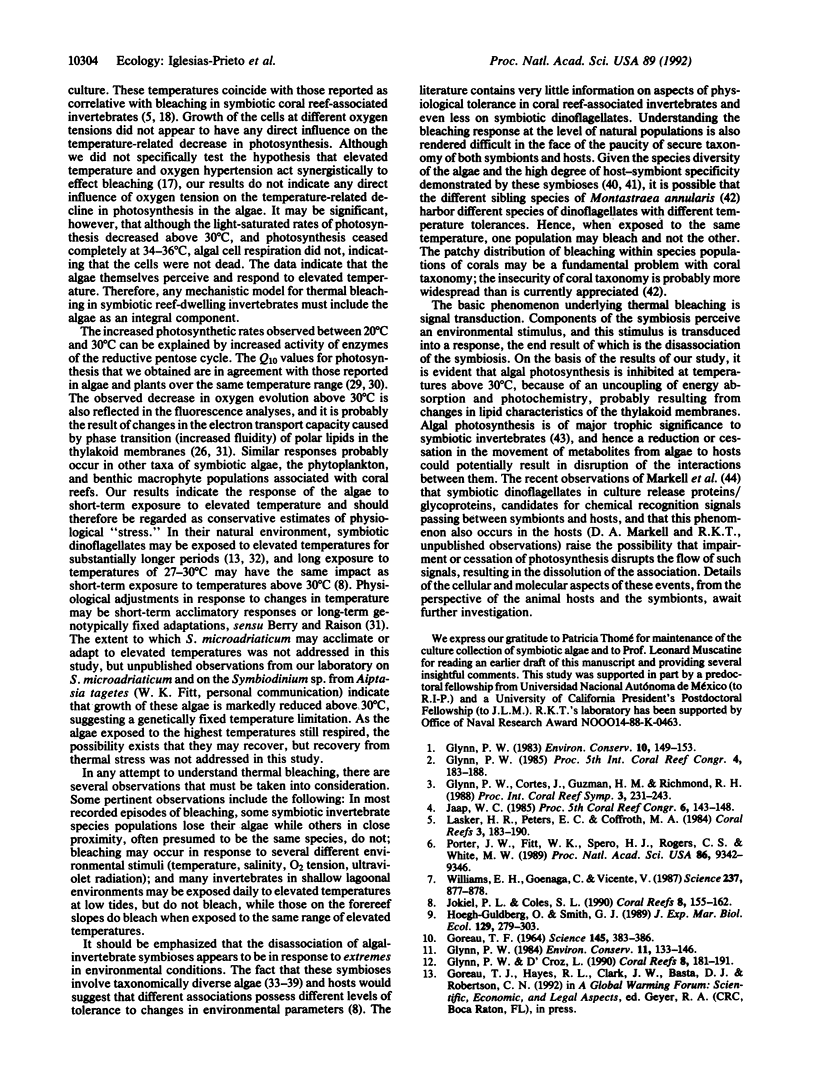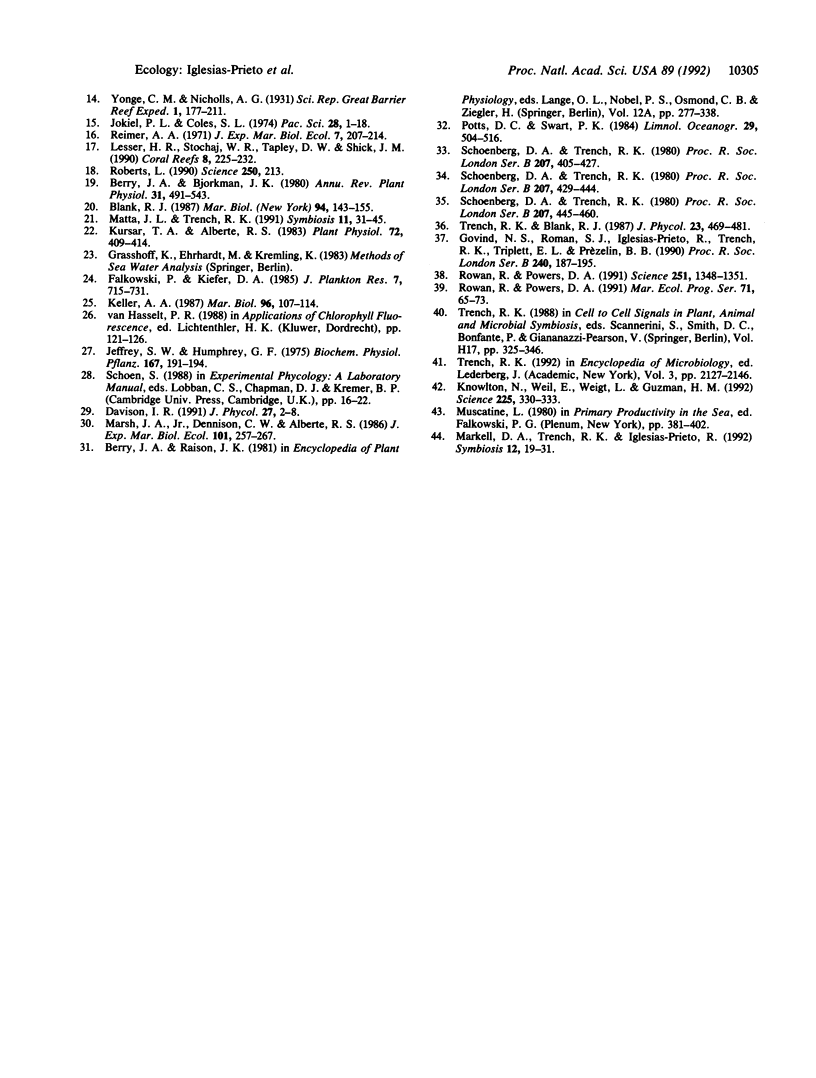Abstract
Elevated temperature (28-34 degrees C) has been hypothesized as the primary cause of the loss of algal endosymbionts in coral reef-associated invertebrates, a phenomenon observed on a world-wide scale over the last decade. In past studies of this "bleaching" phenomenon, there has been an underlying assumption that temperature adversely affects the animal hosts, the algae thereby being relegated to a more passive role. Because photosynthesis is a sensitive indicator of thermal stress in plants and has a central role in the nutrition of symbiotic invertebrates, we have tested the hypothesis that elevated temperature adversely affects photosynthesis in the symbiotic dinoflagellate Symbiodinium microadriaticum. The results, based on analyses of light-mediated O2 evolution and in vivo fluorescence, indicate that photosynthesis is impaired at temperatures above 30 degrees C and ceases completely at 34-36 degrees C. These observations are discussed in the context of possible mechanisms that may function in the disassociation of algal-invertebrate symbioses in response to elevated temperature.
Full text
PDF



Selected References
These references are in PubMed. This may not be the complete list of references from this article.
- Goreau T. F. Mass Expulsion of Zooxanthellae from Jamaican Reef Communities after Hurricane Flora. Science. 1964 Jul 24;145(3630):383–386. doi: 10.1126/science.145.3630.383. [DOI] [PubMed] [Google Scholar]
- Knowlton N., Weil E., Weigt L. A., Guzmán H. M. Sibling Species in Montastraea annularis, Coral Bleaching, and the Coral Climate Record. Science. 1992 Jan 17;255(5042):330–333. doi: 10.1126/science.255.5042.330. [DOI] [PubMed] [Google Scholar]
- Kursar T. A., Alberte R. S. Photosynthetic Unit Organization in a Red Alga : Relationships between Light-Harvesting Pigments and Reaction Centers. Plant Physiol. 1983 Jun;72(2):409–414. doi: 10.1104/pp.72.2.409. [DOI] [PMC free article] [PubMed] [Google Scholar]
- Porter J. W., Fitt W. K., Spero H. J., Rogers C. S., White M. W. Bleaching in reef corals: Physiological and stable isotopic responses. Proc Natl Acad Sci U S A. 1989 Dec;86(23):9342–9346. doi: 10.1073/pnas.86.23.9342. [DOI] [PMC free article] [PubMed] [Google Scholar]
- Roberts L. Warm waters, bleached corals. Science. 1990 Oct 12;250(4978):213–213. doi: 10.1126/science.250.4978.213. [DOI] [PubMed] [Google Scholar]
- Rowan R., Powers D. A. A molecular genetic classification of zooxanthellae and the evolution of animal-algal symbioses. Science. 1991 Mar 15;251(4999):1348–1351. doi: 10.1126/science.251.4999.1348. [DOI] [PubMed] [Google Scholar]
- Williams E. H., Jr, Goenaga C., Vicente V. Mass bleachings on atlantic coral reefs. Science. 1987 Nov 13;238(4829):877–878. doi: 10.1126/science.238.4829.877-b. [DOI] [PubMed] [Google Scholar]


